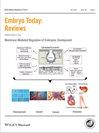Maureen W. Groer, Katherine E. Gregory, Adetola Louis-Jacques, Shelley Thibeau, W. Allan Walker
下载PDF
{"title":"The very low birth weight infant microbiome and childhood health","authors":"Maureen W. Groer, Katherine E. Gregory, Adetola Louis-Jacques, Shelley Thibeau, W. Allan Walker","doi":"10.1002/bdrc.21115","DOIUrl":null,"url":null,"abstract":"<p>This review describes current understandings about the nature of the very low birth weight infant (VLBW) gut microbiome. VLBW infants often experience disruptive pregnancies and births, and prenatal factors can influence the maturity of the gut and immune system, and disturb microbial balance and succession. Many VLBWs experience rapid vaginal or Caesarean births. After birth these infants often have delays in enteral feeding, and many receive little or no mother's own milk. Furthermore the stressors of neonatal life in the hospital environment, common use of antibiotics, invasive procedures and maternal separation can contribute to dysbiosis. These infants experience gastrointestinal dysfunction, sepsis, transfusions, necrotizing enterocolitis, oxygen toxicity, and other pathophysiological consditions that affect the normal microbiota. The skin is susceptible to dysbiosis, due to its fragility and contact with NICU organisms. Dysbiosis in early life may resolve but little is known about the timing of the development of the signature gut microbiome in VLBWs. Dysbiosis has been associated with a number of physical and behavioral problems, including autism spectrum disorders, allergy and asthma, gastrointestinal disease, obesity, depression, and anxiety. Dysbiosis may be prevented or ameliorated in part by prenatal care, breast milk feeding, skin to skin contact, use of antibiotics only when necessary, and vigilance during infancy and early childhood. Birth Defects Research (Part C) 105:252–264, 2015. © 2015 Wiley Periodicals, Inc.</p>","PeriodicalId":55352,"journal":{"name":"Birth Defects Research Part C-Embryo Today-Reviews","volume":"105 4","pages":"252-264"},"PeriodicalIF":0.0000,"publicationDate":"2015-12-10","publicationTypes":"Journal Article","fieldsOfStudy":null,"isOpenAccess":false,"openAccessPdf":"https://sci-hub-pdf.com/10.1002/bdrc.21115","citationCount":"81","resultStr":null,"platform":"Semanticscholar","paperid":null,"PeriodicalName":"Birth Defects Research Part C-Embryo Today-Reviews","FirstCategoryId":"1085","ListUrlMain":"https://onlinelibrary.wiley.com/doi/10.1002/bdrc.21115","RegionNum":0,"RegionCategory":null,"ArticlePicture":[],"TitleCN":null,"AbstractTextCN":null,"PMCID":null,"EPubDate":"","PubModel":"","JCR":"Q","JCRName":"Medicine","Score":null,"Total":0}
引用次数: 81
引用
批量引用
Abstract
This review describes current understandings about the nature of the very low birth weight infant (VLBW) gut microbiome. VLBW infants often experience disruptive pregnancies and births, and prenatal factors can influence the maturity of the gut and immune system, and disturb microbial balance and succession. Many VLBWs experience rapid vaginal or Caesarean births. After birth these infants often have delays in enteral feeding, and many receive little or no mother's own milk. Furthermore the stressors of neonatal life in the hospital environment, common use of antibiotics, invasive procedures and maternal separation can contribute to dysbiosis. These infants experience gastrointestinal dysfunction, sepsis, transfusions, necrotizing enterocolitis, oxygen toxicity, and other pathophysiological consditions that affect the normal microbiota. The skin is susceptible to dysbiosis, due to its fragility and contact with NICU organisms. Dysbiosis in early life may resolve but little is known about the timing of the development of the signature gut microbiome in VLBWs. Dysbiosis has been associated with a number of physical and behavioral problems, including autism spectrum disorders, allergy and asthma, gastrointestinal disease, obesity, depression, and anxiety. Dysbiosis may be prevented or ameliorated in part by prenatal care, breast milk feeding, skin to skin contact, use of antibiotics only when necessary, and vigilance during infancy and early childhood. Birth Defects Research (Part C) 105:252–264, 2015. © 2015 Wiley Periodicals, Inc.

 求助内容:
求助内容: 应助结果提醒方式:
应助结果提醒方式:


